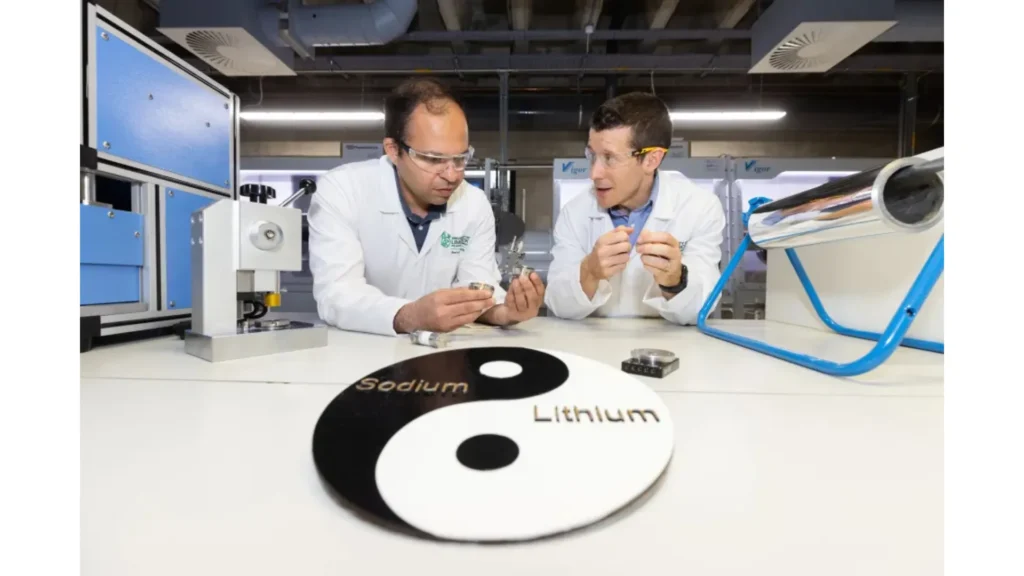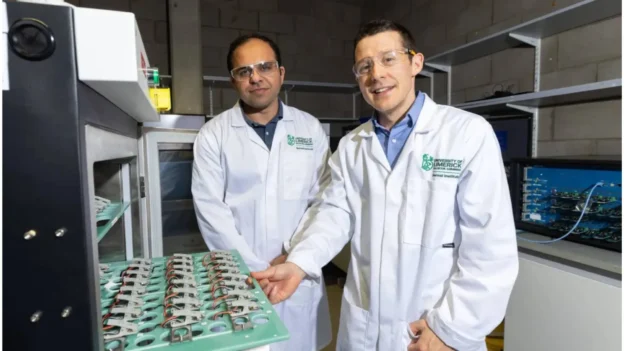Researchers at the University of Limerick’s Bernal Institute have developed the world’s first full-cell dual-cation battery, combining lithium and sodium in a single system, to double the capacity, improve stability and reduce the environmental impact of conventional batteries.
How does the battery work?
In traditional batteries, cations travel from one electrode to the other during charging and discharging, with only one type of cation doing this work, e.g., only lithium ions, or only sodium ions. Hence the term “single cation”.
Instead of using only sodium or only lithium, scientists at the University of Limerick (UL) have created a system where both ions (lithium and sodium) work together in the same electrolyte, the medium that allows the flow of ions.
For the first time, we have demonstrated that sodium-ion batteries can be ‘supercharged’ by combining sodium and lithium in a sodium-dominated double-cation electrolyte.
Professor Hugh Geaney.
Who are behind the breakthrough?
The project has been made possible by the joint work of Professor Hugh Geaney, who has extensive experience in energy storage materials. energy storage materials, and Dr. Syed Abdul Ahadand Dr. Syed Abdul Ahad, responsible for the experimental part.
The research was published in the journal Nano Energyand involved collaboration with the University of Birmingham to validate the whole-cell model, passing stability tests in the laboratory.

Why is this such a breakthrough?
Until now, only one type of ion has been chosen when making batteries, but this work shows that they can be strategically combined to create a synergistic system. By keeping sodium as the main component, the battery remains cheaper and less polluting than a pure lithium battery, while drastically reducing dependence on lithium.
What’s next in the investigation?
Following this initial achievement, the UL team plans to expand its work into new material combinations, including silicon-based anodes and ion pairs such as lithium-magnesium or potassium-lithium. The big challenge will be to take this concept from a laboratory cell to a commercially viable, large-scale battery.
Source and Photo: Bernal Institute of the University of Limerick

